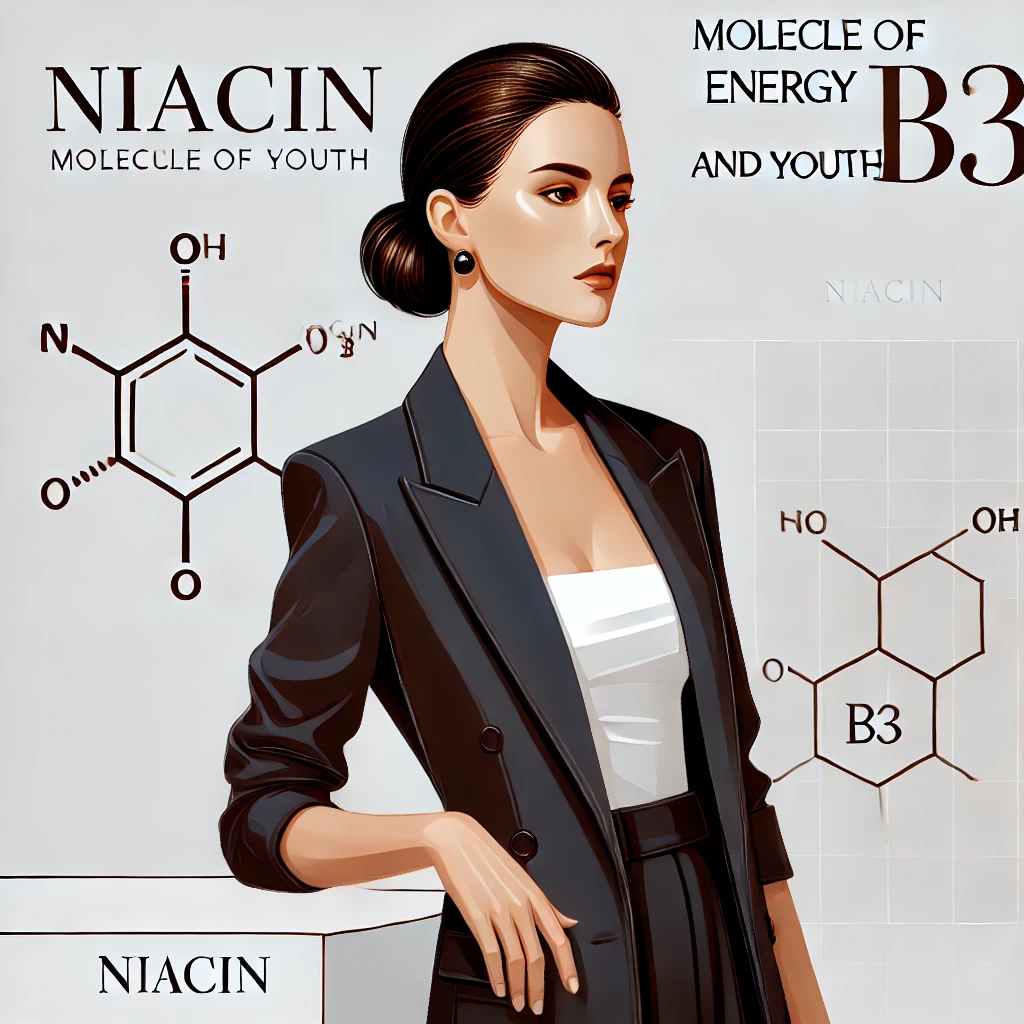Niacin, also known as Vitamin B3, is a water-soluble vitamin that’s part of the B-complex group. It’s great for helping you relax and sleep better at night. Additionally, niacin is known for lowering bad cholesterol (LDL) and raising good cholesterol (HDL), which is good for your heart. It also significantly lowers triglycerides, another type of fat in your blood.
One unique effect of niacin is the “niacin flush.” This happens when niacin dilates your blood vessels, making you feel warm and causing your skin to turn pink or red. This flush shows you’ve taken enough niacin. To manage the flush, start with small doses and gradually increase them. For example, begin with 25 mg three times a day with meals and slowly increase the dose until you notice a slight flush.
Niacin can also help reduce anxiety and depression. It’s important to take niacin after meals to reduce the intensity of the flush. If you take too much niacin on an empty stomach, you might experience a more intense and longer-lasting flush.
Everyone needs different amounts of niacin, and it’s safe for most people to take without a prescription. However, those with certain health conditions or pregnant women should consult their doctor before taking higher doses. Regular monitoring of liver enzymes through a blood test is recommended for long-term niacin use to ensure safety.
Niacin tablets are easily available online or at pharmacies in doses like 50 mg, 100 mg, or 250 mg. Taking niacin with food can delay the flush, while taking it on an empty stomach can cause a quick flush. There are also no-flush versions of niacin, such as niacinamide, which don’t cause this warm sensation but may be less effective in lowering cholesterol.
For best results, take niacin along with other B-complex vitamins. Niacin is essential for good health, and some experts believe the recommended daily allowance (RDA) is too low for optimal health. So, it’s worth considering higher doses based on your individual needs and the guidance of health professionals.
If you’re unsure about the niacin flush or its benefits, remember that the flush generally decreases over time as your body adjusts. Each person’s response to niacin is different, so finding the right dose may take some time.
Forms of Niacin
There are two common forms of no-flush niacin: niacinamide and inositol hexaniacinate. These forms of Vitamin B3 are often found in multivitamins and B-complex supplements. Inositol hexaniacinate usually doesn’t cause flushing, and niacinamide almost never does. However, inositol hexaniacinate is considered less effective than plain niacin, and niacinamide does not help lower cholesterol. These distinctions are important when choosing the right type of niacin for your needs.
How Niacin Helps You Stay Young and Healthy
Niacin is incredibly important for boosting NAD (Nicotinamide Adenine Dinucleotide) levels in your body. NAD is a coenzyme, which is a helper molecule that assists in various biological processes. In simple terms, NAD helps your cells produce energy and repair themselves. As we age, NAD levels naturally decline, which can lead to decreased energy, slower metabolism, and reduced cell repair.
By boosting NAD levels, niacin helps your body maintain high energy levels, supports a healthy metabolism, and promotes better cell repair. This means you can feel more energetic, look younger, and stay healthier. Keeping NAD levels up is one of the most important things you can do for your overall health and longevity. So, by taking niacin, you’re not just supporting your heart and mental health, but also giving your body the tools it needs to stay youthful and vibrant.


